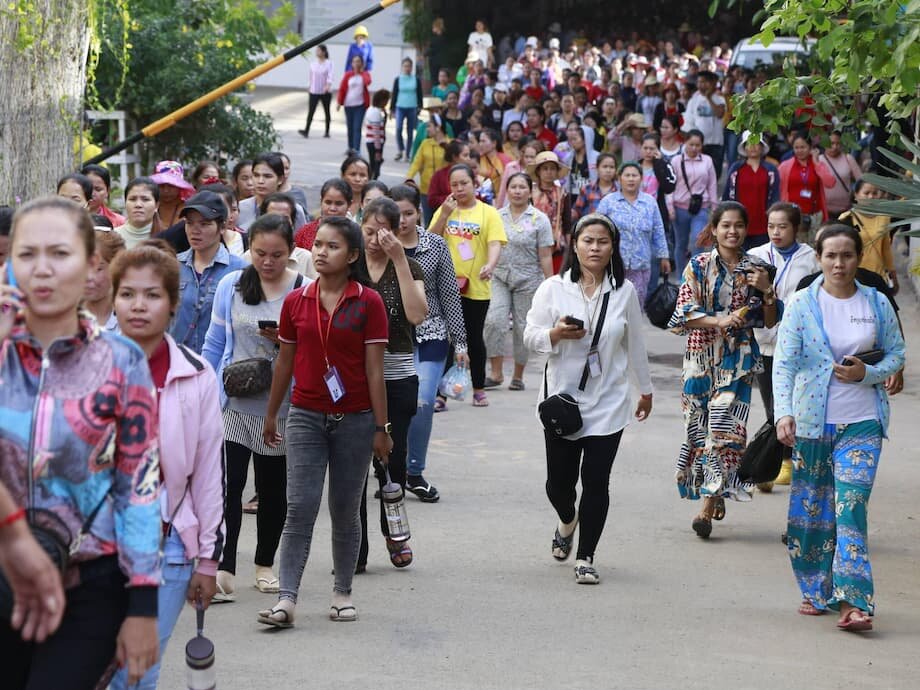The Looming Threat: US Tariffs Put Cambodia’s Garment Industry in Peril
Cambodia’s garment industry, the backbone of its economy and the lifeline for nearly a million workers, is facing an unprecedented crisis. As the United States imposes steep tariffs—initially set at 49%, then negotiated down to 36%, and finally to 19%—the future of Cambodia’s largest export sector hangs in the balance. The impact of these tariffs is not just economic; it is deeply human, affecting the livelihoods of hundreds of thousands of families, most of whom are women and rural migrants. With the August 1 deadline for the new tariffs now in effect, the country stands at a crossroads, grappling with job losses, mounting debt, and the specter of social instability.
- The Looming Threat: US Tariffs Put Cambodia’s Garment Industry in Peril
- Why Are US Tariffs Targeting Cambodia?
- How Tariffs Threaten Jobs and Factories
- The Human Cost: Women Workers and Vulnerable Households
- Geopolitics and the US-China Trade Rivalry
- Government Response and Industry Adaptation
- Broader Implications: What Does This Mean for Cambodia and the Global Garment Industry?
- In Summary
Why Are US Tariffs Targeting Cambodia?
Tariffs are taxes imposed by one country on goods imported from another. In theory, they are meant to protect domestic industries or punish trade partners for perceived unfair practices. In practice, they often trigger cycles of retaliation and disrupt global supply chains. The Trump administration’s tariffs on Cambodia are part of a broader strategy targeting countries seen as benefiting from trade imbalances or acting as trans-shipment hubs for Chinese goods. US officials have accused Chinese companies—who reportedly own up to 90% of Cambodia’s garment factories—of using Cambodia to sidestep existing tariffs on Chinese exports.
Cambodia’s trade surplus with the US is significant. In 2024, Cambodia exported nearly $10 billion worth of goods to the US, accounting for almost 40% of its total exports. More than half of these exports are garments, footwear, and travel goods. The US is, by far, Cambodia’s largest single-country buyer in this sector.
How Tariffs Threaten Jobs and Factories
The garment, footwear, and travel goods (GFT) sector employs over 900,000 Cambodians, with women making up more than 75% of the workforce. The sector is not only a major source of employment but also a critical pillar of the country’s formal economy. The imposition of high tariffs threatens to unravel this delicate fabric.
Massimiliano Tropeano, a garment sector consultant and member of EuroCham Cambodia, warns,
“Factories supplying American brands will be substantially affected, with very little room to absorb the 36% added costs.”
He estimates that up to 150,000 jobs could be lost if the tariffs remain in place.
Industry observers note that the pressure is already palpable on the factory floor. Larger factories have begun cutting back hours and eliminating overtime, while smaller subcontracted factories—often with fewer worker protections—continue to hire, albeit under more precarious conditions. A recent survey by Better Factories Cambodia found that nearly half of 203 factories were facing order uncertainty beyond the next three months, with 15% reporting no confirmed orders at all.
The anxiety is not limited to factory workers. Migrant workers who had previously sought better wages in Thailand are now returning home due to border tensions and violence, only to find a shrinking job market. Many, like 25-year-old That Sopring, return with debt and little hope for employment.
“There’s no work now, just debt,”
Sopring says, echoing the fears of thousands.
Regional Competition and Supply Chain Shifts
The situation is further complicated by regional competition. Neighboring countries like Vietnam and Indonesia have negotiated lower tariffs with the US—20% and 19% respectively—making them more attractive destinations for manufacturers. Unlike Cambodia, these countries have developed homegrown textile mills, reducing their reliance on imported Chinese fabrics and giving them a competitive edge.
Experts warn that production of basic garments is highly mobile and can shift quickly to countries with lower costs or more favorable trade terms. As Jason Judd, executive director of ILR’s Global Labor Institute, explains,
“Simple garment production can move from Cambodia to the Philippines in weeks, but footwear cannot jump from Vietnam to India in weeks.”
This mobility puts additional downward pressure on wages and job security in Cambodia.
The Human Cost: Women Workers and Vulnerable Households
The brunt of the crisis is borne by women. In Cambodia, women make up 75-80% of the garment workforce. These jobs, while low-paid and often precarious, are vital for supporting children, elderly parents, and entire households. The loss of income from factory closures or reduced hours has ripple effects, threatening children’s education, access to healthcare, and basic household stability.
Yang Sophorn, President of the Cambodian Alliance of Trade Unions (CATU), highlights the gendered impact:
“When costs rise or sales decline, women are often the first to lose their jobs due to their precarious status. Their lower wages also make them less able to withstand income shocks, and their job losses have ripple effects on households and communities.”
Many women workers have taken out loans to support their families, making them especially vulnerable to economic shocks. Cambodia is one of the most credit-penetrated countries in the region, with more than half of households in debt to formal lenders. The country’s prime minister, Hun Manet, has urged banks and microfinance institutions to ease loan repayments for returning migrants, but the cycle of debt remains a persistent threat.
Informal Workers and Social Downgrading
The impact of tariffs extends beyond formal factory workers. Informal workers—those without contracts or legal protections—are even more exposed. During previous trade shocks, such as the COVID-19 pandemic or the partial loss of EU trade preferences in 2020, factories responded by slashing benefits, moving full-time workers to temporary status, and cutting real wages. This phenomenon, known as “social downgrading,” is likely to repeat as factories scramble to absorb the new tariffs.
As one union leader put it,
“If factory owners don’t get the benefits, and if we can’t produce much for them, they will take it out on us.”
Geopolitics and the US-China Trade Rivalry
Cambodia’s predicament is not just about economics; it is also a casualty of global geopolitics. The ongoing US-China trade rivalry has led to shifting supply chains, with some manufacturers relocating to Southeast Asia—including Cambodia—to avoid tariffs. However, this has brought increased scrutiny from the US, which is concerned about transshipment and the true origin of goods. Cambodia must now balance its economic ties with both the US and China, while ensuring compliance with international trade regulations.
Chinese investment plays a significant role in Cambodia’s garment sector, accounting for nearly half of all foreign investment. Projects like the Sihanoukville Special Economic Zone and infrastructure upgrades are reshaping the country’s economic landscape. Yet, heavy reliance on Chinese capital and supply chains makes Cambodia vulnerable to external shocks and accusations of being a conduit for Chinese goods.
Government Response and Industry Adaptation
The Cambodian government has responded to the crisis with a mix of negotiation and strategic adaptation. The reduction of the US tariff from 49% to 19% was hailed as a major breakthrough, averting the immediate collapse of the garment sector. Deputy Prime Minister Sun Chanthol emphasized that the lower tariff allows Cambodia to remain competitive with regional peers and maintain factory operations.
However, experts caution that this reprieve may be temporary. Dr. Penghuy Ngov, an economist, stresses the need for diversification into ASEAN and EU markets, leveraging Cambodia’s membership in the Regional Comprehensive Economic Partnership (RCEP) and its free trade agreement with China. These agreements provide preferential access to large markets, but require investment in logistics, technology, and compliance with labor standards.
Industry leaders are also pushing for greater adoption of automation and digital supply chain management to enhance competitiveness. Initiatives like the China-Cambodia Joint Committee on Science, Technology, and Innovation are driving digital infrastructure development, while the Belt and Road Initiative (BRI) is funding major transportation projects.
Labor Rights and the Path Forward
Labor rights remain a contentious issue. The refusal of some global brands to sign collective bargaining agreements has left workers exposed to arbitrary layoffs and benefit cuts. The Cambodia Agreements, a legally binding framework for standardized collective bargaining, offer a potential model for sustainable labor practices but require broader industry adoption.
As Jason Judd notes,
“Risk and cost in supply chains are pushed down from investors and buyers to manufacturers to workers. In countries where worker organizing is suppressed or workers otherwise struggle to win enforcement of basic standards, those standards will slide to protect employers’ margins and jobs.”
Broader Implications: What Does This Mean for Cambodia and the Global Garment Industry?
The crisis in Cambodia’s garment sector is a microcosm of broader trends in global trade. The rapid mobility of basic garment production means that countries compete fiercely on costs, often at the expense of workers’ rights and social protections. Tariffs, while intended to protect domestic industries, often end up hurting the most vulnerable workers in exporting countries.
For Cambodia, the stakes are high. The garment sector underpins the country’s formal economy, supports millions of dependents, and is a key driver of poverty reduction and women’s empowerment. Yet, the sector’s heavy reliance on a single export market—the US—makes it acutely vulnerable to policy shifts and external shocks.
International organizations and labor advocates are calling for a more equitable approach to trade, one that recognizes the human cost of tariffs and prioritizes job quality, gender equity, and economic justice. Without such measures, the cycle of poverty, debt, and precarious employment is likely to persist.
In Summary
- The US has imposed steep tariffs on Cambodian garment exports, threatening hundreds of thousands of jobs and destabilizing the country’s largest export sector.
- Women workers, who make up the majority of the garment workforce, are especially vulnerable to job losses and income shocks.
- Regional competition from countries with lower tariffs, such as Vietnam and Indonesia, is intensifying pressure on Cambodia’s factories and workers.
- The crisis is exacerbated by high household debt, weak labor protections, and the return of migrant workers from Thailand.
- Government negotiations have reduced the tariff rate to 19%, providing temporary relief, but long-term solutions require diversification, investment in technology, and stronger labor rights.
- The situation highlights the broader challenges of global supply chains, where the costs of trade disputes are often borne by the world’s poorest workers.




